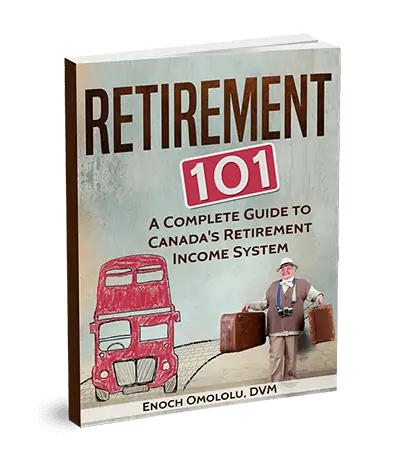Depending on how your registered accounts are set up, they may be treated differently when you, the owner or annuitant, die.
Ensuring you set up your savings or retirement accounts properly and writing a will should be part of your estate planning. And the sooner you get it done, the better.
Learn about what happens to your RRSP, TFSA, and RRIF accounts when you pass on.
Registered Retirement Savings Plan (RRSP)
The RRSP is a savings plan set up by the government to encourage individuals to save for retirement. Contributions made to the plan during your working years are deductible and are sheltered from taxes until you start withdrawing from the plan.
In general, at the time of death, the RRSP annuitant (owner) is deemed to have cashed out their RRSP assets, and the fair market value of the investments is included in their income for the year and taxed at their marginal tax rate.
However, there are several ways to ensure your beneficiaries get what you want for them and that the taxman does not end up with a big chunk of your estate.
Possible scenarios for RRSP account beneficiary’s following death are:
A. You have designated a qualified beneficiary in your RRSP application. Qualified beneficiaries include:
- Spouse or common-law partner
- Financially dependent child or grandchild who is infirm (has a physical or mental disability)
- Financially dependent child or grandchild
B. You have not designated a ‘qualified’ beneficiary (or anyone at all) in your RRSP application. Scenarios include:
- Financially independent child or grandchild
- A charitable organization
- Designating the estate as the beneficiary
Let’s discuss these options individually.
Related: Complete Guide To Retirement Income in Canada
A. Designating a Qualified Beneficiary
Spouse or Common-Law Partner
The RRSP assets can be transferred or ‘rolled over’ to a spouse designated as a beneficiary in the RRSP contract. Depending on their age, a spouse can transfer the assets to their RRSP or RRIF to keep the tax-deferred status.
With this approach, they will not pay any taxes on the assets until they start withdrawing funds from their RRSP/RRIF. The deceased’s estate will also not be required to pay taxes on the transferred RRSP assets.
A spouse can also choose not to roll over the assets into a tax-deferred plan (RRSP or RRIF) and instead take it out as cash. In this scenario, the deceased’s estate will account for the value of the RRSP in the final income tax filing and will need to pay any resulting taxes.
Financially Dependent Infirm Child or Grandchild
An RRSP owner can designate their financially dependent child or grandchild who is physically or mentally disabled as their RRSP beneficiary. Depending on the child’s age, they may do the following with funds from the account:
- Transfer it into their own RRSP or RRIF
- Purchase an annuity that pays them annually until they reach 18 years of age
- Roll over the assets into a Registered Disability Savings Plan (RDSP). There’s a lifetime overall limit of $200,000 to funds that can be transferred to an RDSP (including contributions). RRSP assets rolled over into an RDSP are not eligible for disability grants.
An infirm child is deemed to be financially dependent on the deceased if they had a personal income in the previous year that is less than the basic personal amount ($15,000) plus the disability amount ($9,428) for that year – a total of $24,428 for 2023 ($23,268 for 2022).
Financially Dependent Child or Grandchild
If young children financially dependent on the deceased (but not infirm) have been designated as beneficiaries, the RRSP assets can be used to purchase a fixed-term annuity that pays them periodically until they reach 18. Any taxes due on the annuity payments will be paid by the child, who would normally be in a much lower tax bracket.
However, these annuities are not possible after age 18. In a case where the child is an adult but financially dependent (and with no disability), the funds can be transferred to them in cash as well. The funds are then taxed as ordinary income in their hands at their marginal tax rate.
A child is deemed financially dependent on the deceased if they had a personal income in the previous year that is less than the federal basic personal amount for that year – $15,000 for 2023.
B. Designating a Non-Qualified Beneficiary
Financially Independent Adult Child or Grandchild
The fair market value of assets in the RRSP is transferred to the beneficiary, and the value is fully reported in the final income tax return of the deceased, where it is subject to taxation.
Charity as Beneficiary
An RRSP annuitant can designate a charitable organization as a part or full beneficiary to their RRSP assets after death. When this happens, the value of the assets is still included in the final income of the deceased, and taxes are assessed.
That being said, the charitable donation will qualify for the charitable donation tax credit of up to 100% of the RRSP assets donated. This tax credit should cancel out any taxes that are due on the donated amount.
Estate as Beneficiary
If no beneficiary is named or if the estate is designated as a beneficiary in the will, RRSP assets are added to the estate and included in the income of the deceased. The estate pays the required taxes.
If a ‘qualified’ beneficiary is named in the will as a beneficiary of proceeds from the estate, they may be able to make tax-deferred transfers of RRSP assets to their own RRSP, RRIF, Annuity, or RDSP.
For this to work, the “qualifying” beneficiary (such as a spouse or infirm child/grandchild) and the estate executor must file a joint election agreeing to go this route.
Having RRSP assets tied up with the rest of the estate increases the estate’s value and can result in increased probate and other administration fees.
Related: The TFSA Limit for 2023
Registered Retirement Income Funds (RRIFs)
Funds in a deceased’s RRIF are generally treated in a similar way to RRSPs.
Qualified beneficiaries can transfer or roll over assets from the account to their own RRSP, RRIF, RDSP, or Annuity. Taxes are paid in the future at the hands of the beneficiaries when they withdraw from their registered account.
A difference between RRIFs and RRSPs is that for an RRIF, a spouse or common-law partner can be named as a “successor-annuitant” in the RRIF application.
When this is the case, following the death of the RRIF holder, the account stays open, and the spouse becomes the new owner and will continue to receive the RRIF payments.
The advantage of designating a spouse as a successor annuitant is that there will be no need for them to collapse your RRIF, and it is less stressful.
Tax-Free Savings Account (TFSA)
The TFSA is different from an RRSP or RRIF in that the initial holder of the account made contributions to the plan using after-tax funds. And by definition, the account is tax-free, and income earned on investments is generally non-taxable.
A TFSA holder has the option to indicate beneficiaries on their initial application. Options available include naming a:
- Successor holder or a
- Beneficiary
Successor Holder
This designation can only be used for a spouse or common-law partner. Like a “successor annuitant” for RRIF beneficiaries, a successor holder to a tax-free savings account simply takes over the account and becomes the new owner.
They do not need to have a TFSA contribution room available, and the account will not be subject to any taxes, including any income earned after the death of the original holder.
Beneficiary
A TFSA holder can designate a spouse, child, or any other individual as a beneficiary to their account after they die. In general, the account has to be collapsed, and the value at the time of death will go to the named beneficiary and remain tax-free.
If the beneficiary wants to contribute proceeds from the deceased’s TFSA to their own TFSA, their options vary depending on the following:
Spouse or common-law partner (CLP): Also referred to as “survivors,” a spouse or CLP to the deceased can contribute the value of the TFSA at the time of death to their own account without requiring contribution room. They must make this contribution (referred to as an exempt contribution) by December 31 of the year following death.
Non-Spouse beneficiary: Any other individual who inherits TFSA proceeds can contribute the amount to their own tax-free savings account if they have a contribution room available. Any capital gains or income earned on the TFSA between death and when it is paid out, are taxable as ordinary income in the hands of the beneficiaries.
If no beneficiary is named or you name your estate as the beneficiary, the proceeds from your TFSA will be added to your estate, and this will likely increase probate fees.
Closing Thoughts
Retirement and estate planning can be difficult to navigate without extensive research or professional help. If in doubt as to what to do, find a financial planner to assist you. As Benjamin Franklin once quipped:
In this world nothing can be said to be certain, except death and taxes.
The taxman will always get his ‘cut,’ but you can minimize your overall tax burden through proper planning.
Check your RRSP, RRIF, and TFSA applications again – you may need to call your financial institution to confirm what you have on file.
Ensure that you have designated appropriate beneficiaries for all your accounts while you’re still breathing.
Related:






@Steve. True! Sorting out finances after death can be tough on those who are mourning the dead…especially with complicated estates. The easier it’s on the survivors, the better.Also, who wants to give their hard earned monies to the government if they can avoid it? ?
Thanks for sharing this- very helpful information. Morbid but a necessity to think about and plan for when thinking about your loved ones.
@GYM: Yes, this is a somewhat morbid topic that needs to get addressed anyhow because estate matters can get really messy when proper arrangements have not been put in place by the deceased.
Great explanations, Enoch. Here in the US, estate law can be extremely complicated since most of it is set at the state level (so you get 50 different sets of rules).
Also, taxes on estate assets are controversial, since some object on the grounds that the money was already taxed when it was earned.
@Miguel: Estate laws are usually complicated. I guess governments find it appealing to have a say so they can ensure that the state gets all they are due, and more!
This is so true!
“In this world nothing can be said to be certain, except death and taxes.”
I know this is stuff I don’t think about yet (or at least try to avoid — the word after death scares me, lol) but it’s good to know something about it.
Overall, this very good information here. Thanks for sharing, Enoch! Haha your website is my go to for this sort of stuff! ?
@Fin$avvy ?: Like GYM mentioned, this stuff does sound morbid and many people (including me) would rather not think about it. However, since we can’t reliably predict the future, it’s one of those topics to think about sooner than later.
I’m glad you found it useful!
My wife recently passed away Feb 1st she had a RRIF account with Manulife receiving monthly payments equal to the minimum withdrawal amount required by the Fed’s. Immediately on receiving notification of her death Manulife Financial stopped these payments. on speaking to my accountant and financial adviser it was suggested that I should contact MF and request that they pay out this minimum amount as a lump sum payment to my wife, prior to transferring the RRIF to me as beneficiary, so that the withdrawal would be taxed in her name and not mine. On contacting MF they advised that this was not possible under rules of Canada Revenue Agency. I then turned to both of my sources to again get their opinion an they suggested MF could be mistaken in this regard. What is your opinion? Jim
@Jim: Sorry to hear about your loss.
The way I understand it generally, if you are designated as her “successor-annuitant”, then immediately after her passing, the RRIF assets pass on to you and all future RRIF payments are reported on your income.
I’m aware that there is also an option where the survivor may be paid a “designated benefit” that is less than the full market value of the RRIF at death, such that the rest of the assets are taxed on the deceased’s final tax return. However, I’m not sure how that works…your accountant is probably right and is your best source of information in this regards.
Cheers.
What happens to RIIF when beneficiaries are three grown-up children of the last parent who just died.
What is the percentage that the government takes of the money in the account ?
As a retiree, I am now trying to put my financial house in order, so to speak. Finding your website and the information contained therein has been timely and useful. I had designated my wife as a “Successor Holder” my RRSP and TFSA investments in a bid to reduce the tax payable at death. I however realize that this is just delaying the inevitable large amount of taxes the CRA will take later. I am now thinking of naming my two children as non-qualified beneficiaries.
Your piece on Charity as Beneficiary was very useful. I however have two questions: 1) In a different article on this subject posted elsewhere, the statement was made that charitable donations are eligible for tax credit only once they’re made. This seems to suggest that naming a charity in one’s will would not be accepted by the CRA. Is this incorrect? 2) To your point about getting up to 100% of the RRSP assets donated, does this mean if I designated $100 as a charitable donation in my will that up to $100 tax credit could be given?
@M.Campbell:
To answer your questions:
1) I believe the tax rules were changed so that RRSP charitable donations in the will are considered to have been made just before the deceased passes.
2) The estate receives a charitable tax credit for the full value of the RRSP donation which should offset all or most of the taxes levied on the amount.
I like the example used in this post:
https://benefaction.ca/case-study-gifts-of-rrspsrrifs/
Excellent article. So on death of TFSA holder (widow mother),if a son is beneficiary, the TFSA transfers to son at FMV. This FMV becomes the new ACB for son and any capital gain when asset sold, or income earned until it’s sold, now is taxed on son’s tax return? IS this correct? What happens if asset drops in value and there is capital loss when later sold by son?
How should one plan their RRSP/RRIF withdrawal amounts in retirement? For example, Ii a single person who owns their own home and is completely debt free retires at age 65 with a total retirement income (CPP, OAS, and company pension) of $40,000, and has $1,500,000 in an RRSP. How much money should this person withdraw yearly from their RRSP/RRIF in order to minimize the income tax payable by their Estate after their death, in order to leave more money to beneficiaries and to also enjoy one’s early retirement years before old age ailments settle in?
In this example, if one were to make the minimum withdrawal amount from one’s RRIF and they die before the age of 95, then their Estate would be paying taxes at the highest marginal rate upon death. Plus, one would be withdrawing the most amount of money from their RRIF when they are much older and probably least likely to be able to enjoy it due to mobility or other age related ailments.
Would the best strategy for this person be to withdraw at the very least enough money from their RRSP/RRIF before the OAS clawback of 15% kicks in?
@Otto: With these amounts, I think you would benefit more from having a thorough financial assessment by a licensed fee-only financial planner.
My daughter tried to open registered accounts (RRSP, TFSA and FHSA) for my adult son. He works and pays taxes. but CAN’T be trusted with $$. She is willing to help provide the funds but seemingly there is NO mechanism by which he cannot be the SOLE individual with access.
Does anyone know of a way to do it?
@George: I assume this is because he is an adult and not incapacitated. Not sure if there are other ways around it.